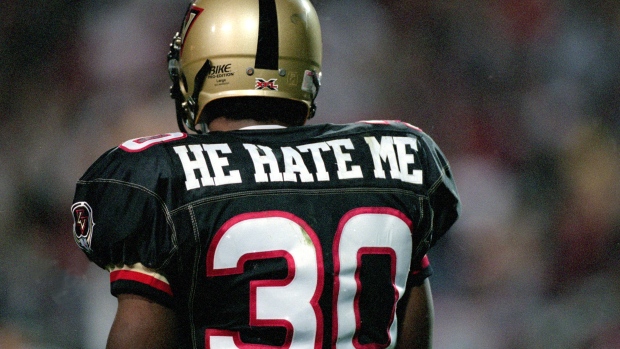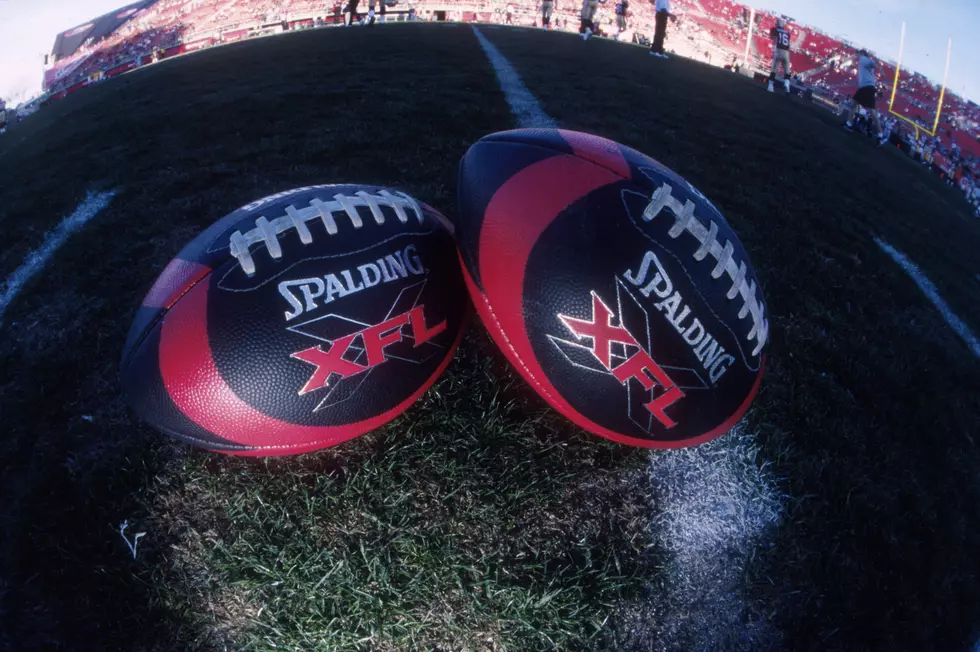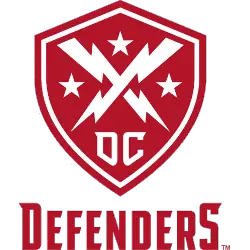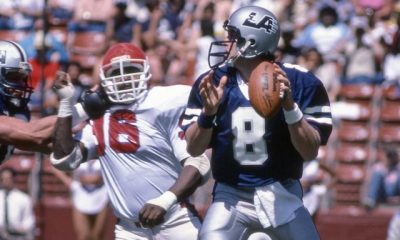Xfl History
There have been several ill-fated attempts to create a professional football league that could serve as an alternative to the NFL. One of the most well-known examples was 2001’s XFL, where the world of pro football was taken to places it hadn’t journeyed before or since.
In an attempt to mix the spectacle-driven world of pro wrestling with traditional American football, the XFL and its owner, WWE Chairman and CEO Vince McMahon, struggled to gain any kind of traffic with the product. After one year of activity, the league folded.
With the relaunching of the 2020 XFL, McMahon is once again trying his hand in the world of pro football, this time, presenting something far more legitimate. With the new and improved XFL off and running, we have created this XFL history page to help you connect the dots between the two installments of the league and see how it went from a failure to a legitimate sports organization.
The Bell XFL Airabonita was an experimental carrier-based interceptor aircraft developed for the United States Navy by Bell Aircraft Corporation of Buffalo, New York. It was similar to and a parallel development of the U.S. Army Air Corps’ land-based P-39 Airacobra, differing mainly in the use of a tailwheel undercarriage in place of the P-39's tricycle gear. XFL (2001), a defunct American football league that played its only season in 2001; XFL (2020), a professional American football league; Vehicles. Bell XFL Airabonita, a 1940 U.S. Navy experimental interceptor aircraft; Jaguar XFL, a 2016–present Sino-British executive sedan; Loening XFL, a canceled 1933 U.S. Navy fighter aircraft; See also.
History of the Original XFL (2001)
From the very beginning, the original XFL attempted to differentiate itself from its competition by flipping the script on what professional football was at the time. Fusing the entertainment-oriented presentation of WWE professional wrestling with a tweaked version of professional football, the XFL had identity issues from the very beginning of its history.
Due to the novelty of the idea and the apparent effort to offer a new football product to the masses, initial ratings for the league were strong. But as the season went on, this format began to lose appeal. Soon, the on-the-field product was deemed a laughingstock by much of the sports and entertainment worlds.
With the pro wrestling influences seeming contrived and out of place with the caliber of play, and football talent not up to par, the league dwindled down the stretch of what would be its lone season in 2001, leading to it folding soon after play had wrapped.
In the end, the league was viewed as a disastrous failure for McMahon and TV partner NBC, who took a hit of $35 million on the doomed project.
McMahon quickly exited the football world and for the next two decades, the sports community would reflect back on the XFL as something of a humorous blunder.
What Went Wrong With the 2001 XFL?
With the league making its return, many skeptics will wonder if history will repeat the same mistakes that led to its fallout all along. But what exactly went wrong with the XFL? Despite opening to a lot of buzz, the league just could not keep any form of interest going with the public. Here are some of the reasons why:
- A concept that would just not work
- While McMahon had his background in mind when shaping this idea, viewers were ultimately not pleased with the concept of mixing pro wrestling elements with pro football gameplay. The disjointed, poorly executed approach at blending the two worlds led to a lack of respectable identity and negatively impacted the game’s already weak presentation.
- A disastrous broadcast
- Part of the weakness in the XFL’s presentation was the struggle the league had with its game broadcasts the whole season. With a lack of realistic football commentary in lieu of wrestling-oriented storytelling, the shortage of professionalism and emphasis on drama only hurt the league more as the season rolled on. Additionally, having pro wrestling personalities on the call in place of legitimate sportscasters and ex-football players made the product seem even further removed from pro football.
- A plummet in ratings
- Despite strong viewership on the night of its launch, ratings severely dipped in the ensuing weeks to the point where consistent viewership became the league’s biggest problem. Upon the league folding at the conclusion of the lone season, poor ratings and suffering viewership were cited as the main reasons why play could not go on longer.
- Poor caliber of play
- While the broadcasting and production of the league was a mess the whole way through, it was also not helped by what took place on the field. With an obvious gap in talent, paired with strange rules that challenged the conventions of traditional American football, the action seen in the XFL was very subpar for something that was deemed to be football at the professional level.
- An unfamiliar presentation
- While certain elements of the XFL would go on to be staples of football broadcasting, such as aerial shots from sky cams and player audio from on the field microphones worn by the athletes, too much of the XFL product was out of the blue for casual sports fans to fully invest in. Too many people were unsure of what they were watching and, as the action on the field unfolded, it only made it seem more of a hopeless project.
The Future of the New 2020 XFL
For nearly 20 years, all of these miscues hung over the XFL’s history like a storm cloud. But with the league’s successor aiming to eradicate these fatal errors on the second time around, fans and bettors will get to experience something far different than the entertainment circus they witnessed back in 2001.

With the effort aimed to package the brand as a true, professional sports league as opposed to a television experiment, the new XFL is already closer to the NFL than the old XFL could have ever been.
Much of this stems from the league looking to balance out the respect and appreciation for world-class football, but also desiring to make the game more exciting in its own way.
XFL Rule Changes
The rule changes of the XFL help do just that, as the tweaking of certain rules helps add a new element of excitement to the game, while also showcasing the league’s deviation from the NFL.
We have a detailed breakdown of what these rules modifications entail and how they are applied to both the spectatorship and gambling involvement of the league on our XFL rules page.

These rules will have a direct impact on scoring, pacing of the game, style of play, and the wagering ramifications, as their departure from the standard NFL protocol further emphasizes that the league intends to be more than just an alternative source to pro football. The XFL wants its own identity with its own rules associated with it, and doing this is the best way to erase constant XFL vs NFL comparison while still having the luxury of shining light on the parallels between both leagues.
Broadcasting of XFL Games
The issues with the original league’s broadcasts are nonexistent, as the new XFL employs professional commentary from established, network announcers. This is a result of the league’s television partnership with two of the biggest entities in the sports and entertainment worlds, ESPN/ABC, and Fox Sports.
These media outlets serving as the home of the league under the lends of a football contest rather than the prior model will make the league far easier to consume for both casual and diehard sports fans.
With a reputable television presence being carried out by solidified sportscasters rather than scripted WWE personalities, the new XFL’s desire to be a football-first product and a true, mainstream sports league will be easier met and its reputation will benefit from it as a result.
Betting on the XFL
The league is not unaware of the current times as it re-enters the mainstream sports world, so it’s only natural that the new XFL looks to establish footing in the sports betting community. McMahon and company made it clear that the XFL would look to professionally and ethically tap into the sports wagering market, as integrity plans and betting implementation systems have been considered along with the start up.
While the league will need to get the wheels rolling underneath it before generating any kind of significant betting traction, the fact that they’re already considering it shows the brand is looking to capitalize on the growing gambling market.
Online sportsbooks are far more relevant than they were during the original run, so betting handle through the internet is something the XFL can pride itself on having from 2020 onward, in addition to the traditional approach of gambling at a sportsbook.
As the league attempts to streamline their relationship with the sports betting world, and the very entities that keep it running, the company’s overall popularity should see a gradual climb, as more people place their bets each weekend of the return season.
Questions About the History of the XFL
Will Learning About the History of the 2001 XFL Help Me in Understanding the New XFL?
No doubt, even if it is just based on comparison. By comparing the two leagues as business models, one can easily find the variation between the old and new XFL and become informed on why the new league is different.
Have There Been Other Sports Leagues Who Have Been Revived After a Failed First Attempt?
Not like this, as the branding and ownership are very much the same for the relaunched XFL. Rather than launching a similar concept under a different name, the new XFL will be a different concept under the same name, providing both continuity and specificity.
Will the New XFL Cover the Sports Betting Market?
Yes, and it is being very proactive in doing so. In fact, the XFL’s friendliness to sports betting is a highlight of their second attempt, and the league is already working on building a strong relationship with the gaming entities required.
Should I Feel Differently About the New XFL Compared to the Original in 2001?
It has corrected the mistakes that plagued the first installment. While the league will still have to discover an identity of its own, its presentation as legitimate football despite being a step down from what is standard is a huge help in gaining respect and attention.
| XFL Airabonita | |
|---|---|
| Role | |
| National origin | United States |
| Manufacturer | Bell Aircraft |
| First flight | 13 May 1940 |
| Status | Canceled |
| Primary user | United States Navy |
| Number built | 1 |
| Developed from | Bell P-39 Airacobra |
The Bell XFL Airabonita was an experimental carrier-basedinterceptor aircraft developed for the United States Navy by Bell Aircraft Corporation of Buffalo, New York. It was similar to and a parallel development of the U.S. Army Air Corps’ land-based P-39 Airacobra, differing mainly in the use of a tailwheel undercarriage in place of the P-39's tricycle gear. Only one prototype was built.


Design and development[edit]
The XFL-1 (Bell Model 5) was powered by a single 1,150 hp (858 kW) Allison XV-1710-6 liquid-cooled V12 engine installed amidships behind the pilot and driving a three-bladed Curtiss Electricpropeller in the nose through a 10.38 ft (3.16 m) extension shaft. The aircraft had provisions for a single 37 mm (1.46 in) Oldsmobile T9cannon which could be replaced by a .50 in (12.7 mm) Browning M2/AN machine gun firing through the propeller shaft and two .30 in (7.62 mm) machine guns in the fuselage nose. It first flew on 13 May 1940.[1]
Although based on the P-39, the XFL-1 utilized a conventional tail-wheel undercarriage and the coolant radiators were housed externally in fairings under the wings instead of within the wing center section. The Allison engine was the first of its type to be tried out by the Navy, and lacked the turbosupercharger fitted to the XP-39.[N 1][1]
Operational history[edit]
In January 1938, the U.S. Navy issued a specification for a light carrier-based fighter to replace the obsolete biplanes then in use. On 11 April 1938, Bell, Brewster, Curtiss, Grumman, and Vought-Sikorksy submitted proposals but only three received contracts. Two of them were awarded contracts for one prototype each on 30 June 1938; these were for the Grumman XF5F-1 Skyrocket and the Vought XF4U-1 Corsair. The third contract, which was signed on 8 November, went to Bell Aircraft for one XFL-1 Airabonita. All three aircraft made their first flight in 1940: the XF5F-1 on 1 April, the XFL-1 on 13 May, and the XF4U-1 on 29 May.
Subsequent tests were prolonged because of difficulties with the Allison engine and problems with the balance of the aircraft. Official evaluation began in July 1940 but the XFL-1 failed to be certified for carrier operations because of main landing gear problems. The prototype was returned to Bell for modifications in December 1940 and returned to the Navy on 27 February 1941 at Naval Air Station Anacostia, District of Columbia. Based on the test results, the Navy decided not to order production of the aircraft.
In February 1942, the XFL-1 was transferred to the Aircraft Armament Unit at Naval Air Station Patuxent River, Maryland. It was later grounded, used for armament tests, and later destroyed. For many years its remains were visible at the dump at NAS Patuxent River.[2][3]
As a possible further reason for the rejection, it is often stated that the Navy's position during that era was that all its aircraft should use air-cooled engines (while the Allison was liquid-cooled). This appears unfounded speculation. The U.S. Navy 'would consider a liquid-cooled engine installation provided a material increase in performance over air-cooled engine can be shown.'[4]
In addition, the Allison engine had only a single-speed supercharger. Consequently, its altitude performance was much inferior to other naval fighters of the period, such as the Grumman F4F Wildcat. [N 2]
Xfl History 2001
Lastly, the Airabonita had to compete against the faster though not 'light' Vought F4U Corsair, which in the initial F4U-1 version was capable of 390 mph at 24,000 ft.[5]
Operators[edit]
- United States
Specifications (XFL-1 Airabonita)[edit]
Data from[citation needed]
General characteristics
- Crew: One
- Length: 29 ft 9 in (9.07 m)
- Wingspan: 35 ft 0 in (10.67 m)
- Height: 12 ft 9 in (3.89 m)
- Wing area: 232 sq ft (21.6 m2)
- Empty weight: 5,161 lb (2,341 kg)
- Gross weight: 6,651 lb (3,017 kg)
- Max takeoff weight: 7,212 lb (3,271 kg)
- Powerplant: 1 × Allison XV-1710-6V-12 piston engine, 1,150 hp (858 kW)

Performance
- Maximum speed: 336 mph (541 km/h, 292 kn)
- Range: 1,072 mi (1,725 km, 932 nmi)
- Service ceiling: 30,900 ft (9,421 m)
- Rate of climb: 2,630 ft/min (13.4 m/s)
- Wing loading: 29 lb/sq ft (140 kg/m2)
- Power/mass: 0.17 hp/lb (280 W/kg)
Armament
Xfl History
- Guns:
- 2 × 0.30 cal (7.62 mm) machine guns
- 1 × 0.50 cal (12.7 mm) machine gun or 37 mm cannon
See also[edit]
Related development
Notes[edit]
- ^Note: Navy engines were distinguished by the use of an even dash number while those for the Army used odd ones.
- ^The U.S. Army Air Corp's P-39 and Curtiss P-40, which used the same engine, had the same difficulty; the Lockheed P-38 Lightning used the same engines but incorporated exhaust-driven superchargers to achieve good altitude performance.
References[edit]
Xfl Oral History
- ^ abBowers 1979, pp. 26–30.
- ^Dorr and Scutts 2000, p. 20.
- ^Thomason 2008, p. 52.
- ^Thomason 2008, p. 1.
- ^Dean, Francis H (1997). America's Hundred Thousand. US production Fighters of World War Two. Schiffler Publishing Ltd. pp. Chapter 5 Fighters Compared Speed Comparisons. ISBN0-7643-0072-5.
Bibliography[edit]
Xfl Football History
- Angelucci, Enzo. 'The American Fighter'.
- Bowers, Peter M. 'Airborne Cobra Pt.II'. Airpower, Vol. 9, No. 1, January 1979.
- Dorr, Robert F. and Jerry C. Scutts. Bell P-39 Airacobra. Ramsbury, Marlborough, Wiltshire, UK: The Crowood Press Ltd., 2000. ISBN1-86126-348-1.
- Green, William. 'Bell XFL-1 Airabonita'. War Planes of the Second World War, Volume Four: Fighters. London: Macdonald & Co. (Publishers) Ltd., 1961 (6th impression 1969), pp. 13–14. ISBN0-356-01448-7.
- Green, William and Gordon Swanborough. 'Bell XFL-1 Airabonita'. WW2 Aircraft Fact Files: US Navy and Marine Corps Fighters. London: Macdonald and Jane's Publishers Ltd., 1976, p. 3. ISBN0-356-08222-9.
- Kinzey, Bert. 'XFL-1 Airabonita'. P-39 Airacobra - in detail. Carrollton, Texas: Squadron/Signal Publications Inc., 1999, p. 8. ISBN978-1-88897-416-4.
- Pelletier, A.J. 'Bell Aircraft since 1935'.
- Thomason, Tommy. Bell XFL-1 Airabonita (Naval Fighters Number Eighty-One). Simi Valley, California: Ginter Books, 2008. ISBN0-942612-81-7.
- Tomalik, Jacek. Bell P-6 Kingcobra, XFL-1 Airabonita, P-39 Airacobra (Monografie Lotnicze 59) (in Polish). Gdansk, Poland: AJ-Press, 2001. ISBN83-7237-034-6.
- Wagner, Ray. 'American Combat Planes Of The 20th Century'.
- Wixey, Ken. 'Flying Cannon: Bell's Cobra Family, Part One'. Air Enthusiast, No. 80, May–June 1999, pp. 20–27. ISSN0143-5450
Xfl History 2001
External links[edit]
Teams Of The Xfl
Media related to Bell XFL Airabonita at Wikimedia Commons